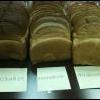I work for a company that produces baked goods. (Bread, muffins, bun, bagels, etc) We have been swabbing for the last two-three years to fulfill a BRC requirement. My question is what exactly should we be swabbing for? I have gotten mixed answers as to the minimum. T.BACTERIA - SWAB PETRIFILM 990.12
Currently swabbing for:
(LISTERIA - SPP 2004.06
Analyst: BRM Listeria spp. Swab ISO A) DRAINS ONLYMOLD - SWAB PETRIFILM 997.02M
Analyst: BRM Mold Swab ISO AYEAST - SWAB PETRIFILM 997.02Y
Analyst: BRM YeastAreas Testing (Bi-Annually)
Air
Water
Drains
Several Food Contact Surfaces
**Please help us make sense of what we need and what we are looking for.**















